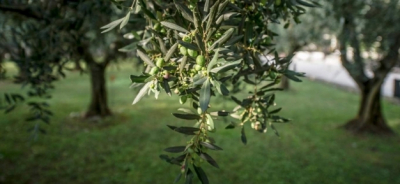The estimates for the 2017/18
World Production of Olive Oil will increase by 5% next season. According to the last international forecast coordinated by Juan Vilar, Strategic Consultant and Professor of the University of Jaén (UJA); and Jorge Pereira, Professor at the University of the Republic of Uruguay, a global production of olive oil of 2,826,890 tons is expected in the 2017/18 season, representing an increase by 5% regarding the previous season

The coordinators of this forecast have reported that the estimates for the 2017/18 campaign have been made with data from the 57 producing countries, with a significance level of 95% and 93% of area and production, respectively.
Of the total expected, the largest production will be Spain (1.20 million tons), Tunisia (290,000 tonnes), Italy (280,000 tonnes), Greece (265,000 tonnes) and Turkey (200,000 tonnes), which represent a joint bid of almost 80% of the oil that will be produced worldwide next season. The authors of this forecast have highlightes that: “All of this data has been made public with caution and pending to see if we have an early autumn with high rainfall.”
Likewise, they expect a global production of almost 20 million tons of olive, of which over 12% will be used for the production of table olives, and the rest, almost 88%, for oil.
As for the average production per hectare, of the more than 11.4 million covered olive trees that populate the planet, it will be of 1,700 kg. of olive, jointly for table and mill, while the average of olive oil obtained will exceed 250 kg., also on average and per hectare.
By cultivation categories, 56% of the olive will come from traditional plantations, 36% from intensive plantations and 8% from hedge row olive plantations.
If we refer to average productivity, Australia and Chile are leaders, with almost 600 kg. of oil per hectare, followed by Spain, with 470 kg.; and Israel, with almost 460 kg., always attending to this forecast.
Prices and demand
The coordinators of this forecast have ensured that if the expected supply corresponds to the current global demand forecast for the mentioned campaign, and against an “incipient” existing global link for the end of September, a stable and solid evolution in the formation of prices at origin is expected, at least until next spring.
On the other hand, the demand could suffer slight contractions sustained and generalized mainly, in their opinion, in mature markets corresponding to great producers, as it is the case of Spain, Italy, Greece and Tunisia.
Predictable long-term trends
On the other hand, if 2018 is a hydrologically adequate year, the more than 11.4 million productive hectares of olive trees in the world “could produce offer a productivity of 80 – 85% out of 3.6 and 3.7 million tons in the 2018/19 campaign, which together with the mentioned fall in the demand of the mature markets, it would create a completely different environment of prices in origin, a situation for which the sector must begin to prepare strategically,” they have considered.
In the words of Juan Vilar “the international olive growing sector finds itself in a golden environment for the development of competitive strategies, especially for those less profitable farms.”
Jorge Pereira has spoken in the same line, referring himself to “the enormous competitive advance of countries such as Australia or Chile, which despite their difficult conditions for cultivation and planted areas that don’t exceed 30,000 hectares, they have similar yields, based in innovation as a competitive strategy.”
Photo by Fratelli Turri
To comment you have to register
If you're already registered you can click here to access your account
or click here to create a new account


Comment this news